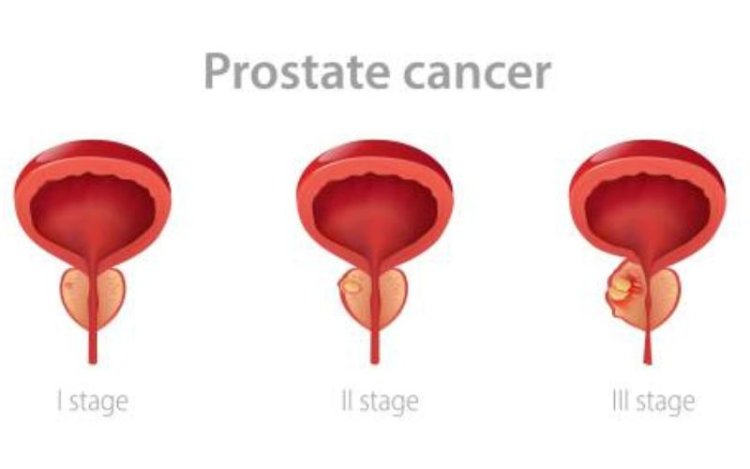What are the 5 early signs of prostate cancer?
Prostate cancer is one of the most common types of cancer in men, particularly those over the age of 50.

Prostate cancer is one of the most common types of cancer in men, particularly those over the age of 50. It occurs when abnormal cells in the prostate, a small gland located below the bladder, begin to grow uncontrollably. Prostate cancer can develop slowly, and in some cases, it may not show symptoms for many years. However, it’s important to be aware of the early signs that could indicate prostate cancer. Early detection and treatment are key factors in improving outcomes, and understanding the potential signs can help individuals seek medical attention promptly.
While prostate cancer may not always present clear symptoms in its early stages, several warning signs might develop over time. These symptoms are often subtle, and they may also overlap with other less serious conditions, such as benign prostatic hyperplasia (BPH), a non-cancerous enlargement of the prostate. However, recognizing these early signs can encourage individuals to seek medical evaluation. Below, we will discuss five early signs that could indicate prostate cancer.
1. Frequent Urination, Especially at Night (Nocturia)
One of the most common early symptoms of prostate cancer is changes in urinary patterns. Prostate cancer can cause the prostate gland to enlarge or become inflamed, which may put pressure on the urethra (the tube through which urine flows from the bladder). As the tumor grows, it can obstruct urine flow and lead to difficulty in urination.
Frequent urination, particularly during the night, known as nocturia, can be a sign that the prostate is not functioning properly. People with this symptom may find themselves waking up multiple times during the night to use the bathroom. This is often due to the prostate putting pressure on the bladder and reducing its capacity to hold urine. Although frequent urination may also occur due to other benign conditions like BPH or a urinary tract infection (UTI), if it’s accompanied by other symptoms, it could be a red flag for prostate cancer.
2. Weak or Interrupted Urine Stream
Another early sign of prostate cancer is a noticeable change in the strength or consistency of the urine stream. As the tumor presses on the urethra, it may cause a weak or interrupted flow of urine. The urine stream may start and stop intermittently or appear to be very weak.
This is because the cancerous growth or an enlarged prostate can obstruct the urethra and make it harder for urine to pass through. In some cases, individuals may also experience difficulty starting urination, feeling like they have to strain or push to get the urine flowing. If these changes occur gradually and persist, it is essential to consult a healthcare provider to rule out prostate cancer or other conditions affecting the prostate.
3. Pain or Discomfort in the Pelvic Area
As prostate cancer progresses, it can begin to cause pain or discomfort in the pelvic region, lower abdomen, or lower back. Painful urination, discomfort in the perineum (the area between the scrotum and anus), or unexplained aches in the pelvis are signs that should not be ignored.
Pain or discomfort in these areas can result from the growing tumor pressing on nearby tissues, nerves, or organs. If prostate cancer spreads beyond the prostate to other parts of the body (a process called metastasis), it can also cause pain in areas like the hips, spine, or ribs. Any unusual or persistent pain in the pelvic area, along with other symptoms, should be evaluated by a healthcare provider to determine whether prostate cancer may be the cause.
4. Blood in the Urine or Semen
The presence of blood in the urine (hematuria) or semen (hematospermia) is a serious warning sign that should prompt immediate medical attention. Although blood in the urine is more commonly associated with other conditions, such as a urinary tract infection or kidney stones, it can sometimes be an early indication of prostate cancer.
In prostate cancer, blood in the urine or semen may result from the tumor affecting blood vessels or nearby tissues, leading to bleeding. Blood in the urine may appear as pink, red, or brown discoloration, and it may be accompanied by pain or discomfort during urination. If blood is noticed in the urine or semen, it is crucial to contact a healthcare provider for further evaluation.
5. Painful Ejaculation or Erectile Dysfunction
Another sign of prostate cancer, particularly as the disease progresses, is painful ejaculation. Men with prostate cancer may experience discomfort or pain during or after sexual activity. This can occur if the tumor is located near the seminal vesicles, which are responsible for producing semen.
Additionally, prostate cancer can cause erectile dysfunction (ED), which is the inability to achieve or maintain an erection. ED is more commonly associated with other conditions, such as aging or cardiovascular disease, but it can also be an early symptom of prostate cancer. The pressure from an enlarged prostate or the effects of the cancerous tumor on the nerves and blood vessels responsible for erectile function can result in difficulties with sexual performance. If erectile dysfunction or painful ejaculation occurs, it is important to consult a healthcare provider to determine whether prostate cancer or another underlying condition may be the cause.
Additional Considerations:
Prostate cancer can sometimes develop without noticeable symptoms, especially in its early stages. In fact, many men with early-stage prostate cancer do not experience significant signs until the cancer has progressed. As such, regular screening is essential for individuals at higher risk, particularly those with a family history of prostate cancer or other risk factors, such as advanced age or African American descent.
Men over the age of 50 (or younger for those with a family history or higher risk) should have regular prostate exams, including a digital rectal exam (DRE) and prostate-specific antigen (PSA) blood tests, to detect potential issues early. These screenings can help detect prostate cancer before symptoms arise, increasing the likelihood of successful treatment.
Risk Factors for Prostate Cancer
It’s important to note that certain factors can increase an individual’s risk for developing prostate cancer. These include:
-
Age: The risk increases significantly for men over the age of 50.
-
Family History: Having a father or brother who had prostate cancer doubles the risk.
-
Race/Ethnicity: African American men are at a higher risk of developing prostate cancer.
-
Diet and Lifestyle: A diet high in red meat and low in fruits and vegetables, as well as obesity, may contribute to a higher risk.
-
Genetic Mutations: In some cases, inherited genetic mutations, such as those in the BRCA1 or BRCA2 genes, may increase the risk.
Conclusion
Prostate cancer often develops slowly and may not present clear symptoms in the early stages. However, several signs—such as frequent urination, a weak or interrupted urine stream, pelvic discomfort, blood in the urine or semen, and painful ejaculation or erectile dysfunction—can signal potential prostate issues, including cancer. While these symptoms may also be related to other conditions, it is essential to seek medical advice if any of these symptoms persist or worsen. Early detection through regular screenings is key to successful treatment, and individuals with risk factors should be particularly vigilant about their prostate health.
If you or someone you know is experiencing any of these signs, it is crucial to consult a healthcare provider for further evaluation and to discuss appropriate diagnostic tests. Timely intervention can significantly improve outcomes and quality of life for individuals diagnosed with prostate cancer.
Read more - (Click here)
What's Your Reaction?
















